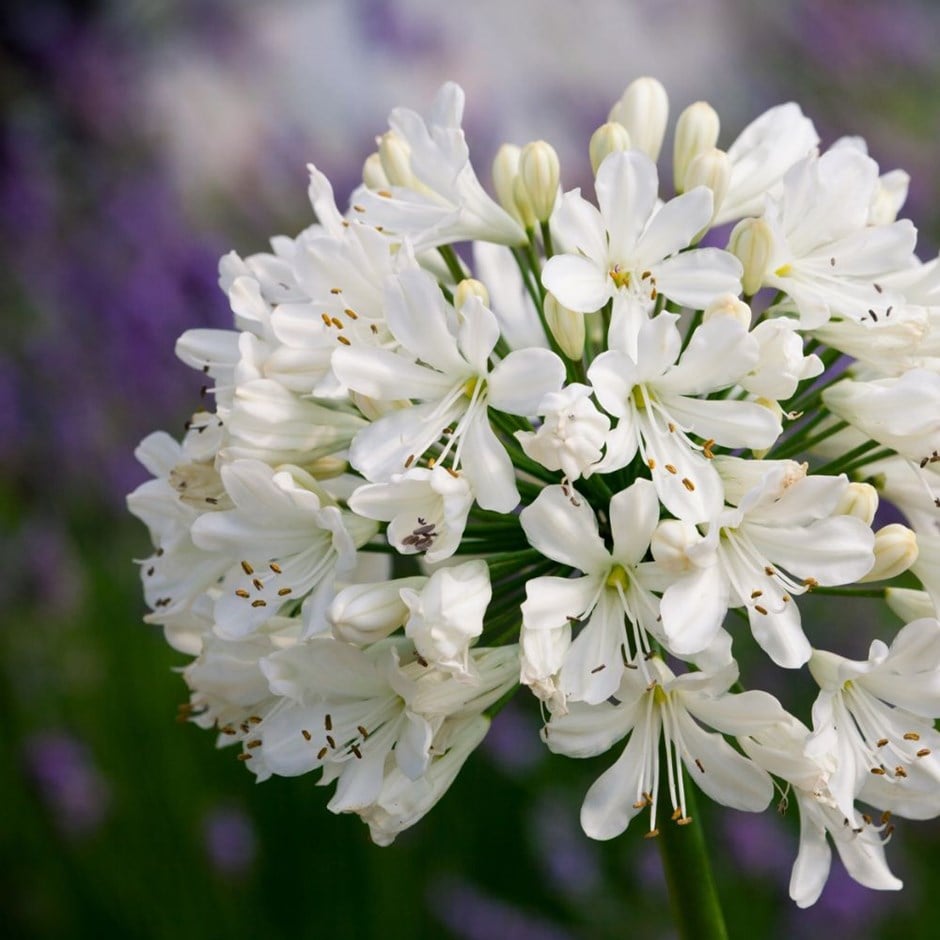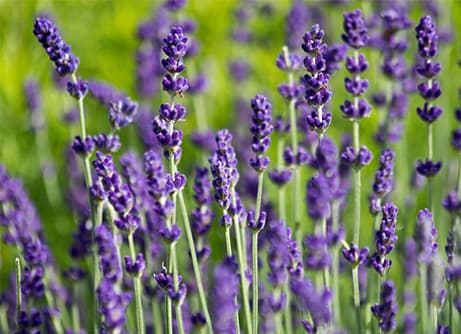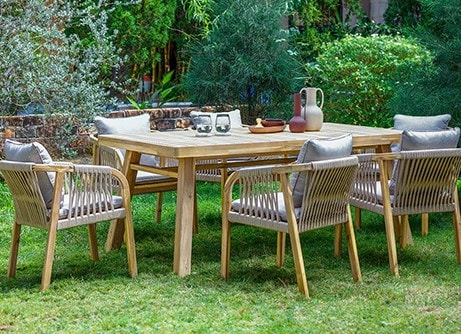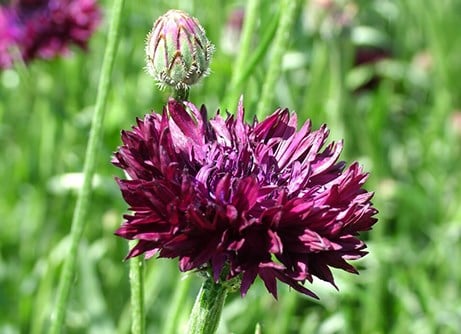
A relatively new form, 'Snow Crystal' is admired for its semi-evergreen foliage, and large heads of white trumpet-shaped flowers, which appear on the upright stems in mid- to late summer.
This gorgeous Agapanthus looks wonderful when used in pots on the patio, but it will also create a striking display when used to line the edges of a pathway, or filling gaps in a sunny border.
This gorgeous Agapanthus looks wonderful when used in pots on the patio, but it will also create a striking display when used to line the edges of a pathway, or filling gaps in a sunny border.
How to care for Agapanthus Snow Crystal:
Depending on the location of planting in the UK, these agapanthus can be semi-evergreen and hold onto their leaves in milder winters, though will typically lose them in colder regions or spells of weather. However, wrapping in a double layer of horticultural fleece and mulching around the base can safeguard the roots.
Keep well-watered during the growing season, applying a balanced liquid fertiliser each month from spring until the plant flowers. Towards the end of September ease back on the watering and feeding of plants in containers to allow the foliage to toughen up.
Grow Agapanthus plants in rich fertile, well drained soil, in a sunny position. When growing in patio containers, use a soil based compost such as John Innes No.3.
Keep well-watered during the growing season, applying a balanced liquid fertiliser each month from spring until the plant flowers. Towards the end of September ease back on the watering and feeding of plants in containers to allow the foliage to toughen up.
Grow Agapanthus plants in rich fertile, well drained soil, in a sunny position. When growing in patio containers, use a soil based compost such as John Innes No.3.
Flowering period:
- Jan
- Feb
- Mar
- Apr
- May
- Jun
- Jul
- Aug
- Sep
- Oct
- Nov
- Dec
Eventual height:
0.8m
Eventual spread:
0.6m
Position:
Full sun
Rate of growth:
Average
Soil:
Moderately fertile, moist, well-drained soil
Hardiness:
Borderline hardy (will need protection in winter in colder areas)
-
This perennial is semi-evergreen so it can lose some of its leaves in winter. In colder regions or more exposed gardens, it may lose them all, but then fresh new growth appears again in spring.
-
Humans/Pets: Harmful if eaten
Product options

3 × 9cm pots
was £34.99
now £27.99
£9.33 each
available to order from summer










